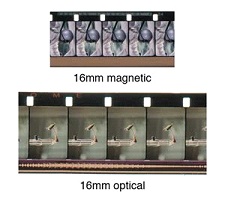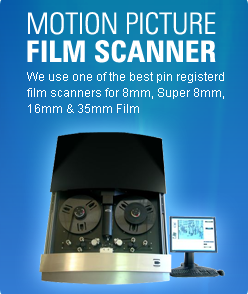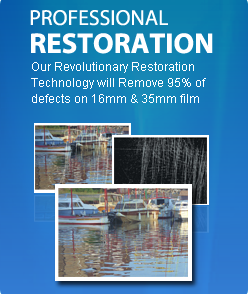
Regular 8mm movie film was never sold commercially with a sound strip but some people did attach a sound strip themselves. Super 8 film has the option but you had to buy the film with the sound strip on it and you had to have a sound camera and microphone. 16mm had both magnetic and optical. On the order form you can let us know if you think your film has sound on it. It does take extra effort to capture the sound and incorporate it into the requested formats. So, we do charge a little more for sound film.
We can not capture any digital audio like Dolby Digital or Sony Dynamic Digital Sound.


The above picture is just an example. 16mm sound film came in many different varieties. 16mm film with optical sound will have sprocket holes on 1 side. The other side will carry the audio track.
There is no sound on Regular 8 film. At least it wasn't produced that way. There were some people that put a magnetic sound strip on 8mm film themselves. There was also some test 8mm film with sound that Kodak used to prepare for Super 8 film.
Super 8 sound could be recorded with a microphone during filming or could also be recorded using a projector when the film played. The quality of the sound varied widely.
Hammond Fun Facts: A butcher from Detroit named George H. Hammond built a slaughterhouse which was the city's first notable business. The town was renamed in tribute to him. In 1884 the city was incorporated.
Indiana Fun Facts: Indiana sits, as its motto claims, at “the crossroads of America.” It borders Lake Michigan and the state of Michigan to the north, Ohio to the east, Kentucky to the south, and Illinois to the west, making it an integral part of the American Midwest. Except for Hawaii, Indiana is the smallest state west of the Appalachian Mountains. After the American Revolution the lands of Indiana were open to U.S. settlers.





